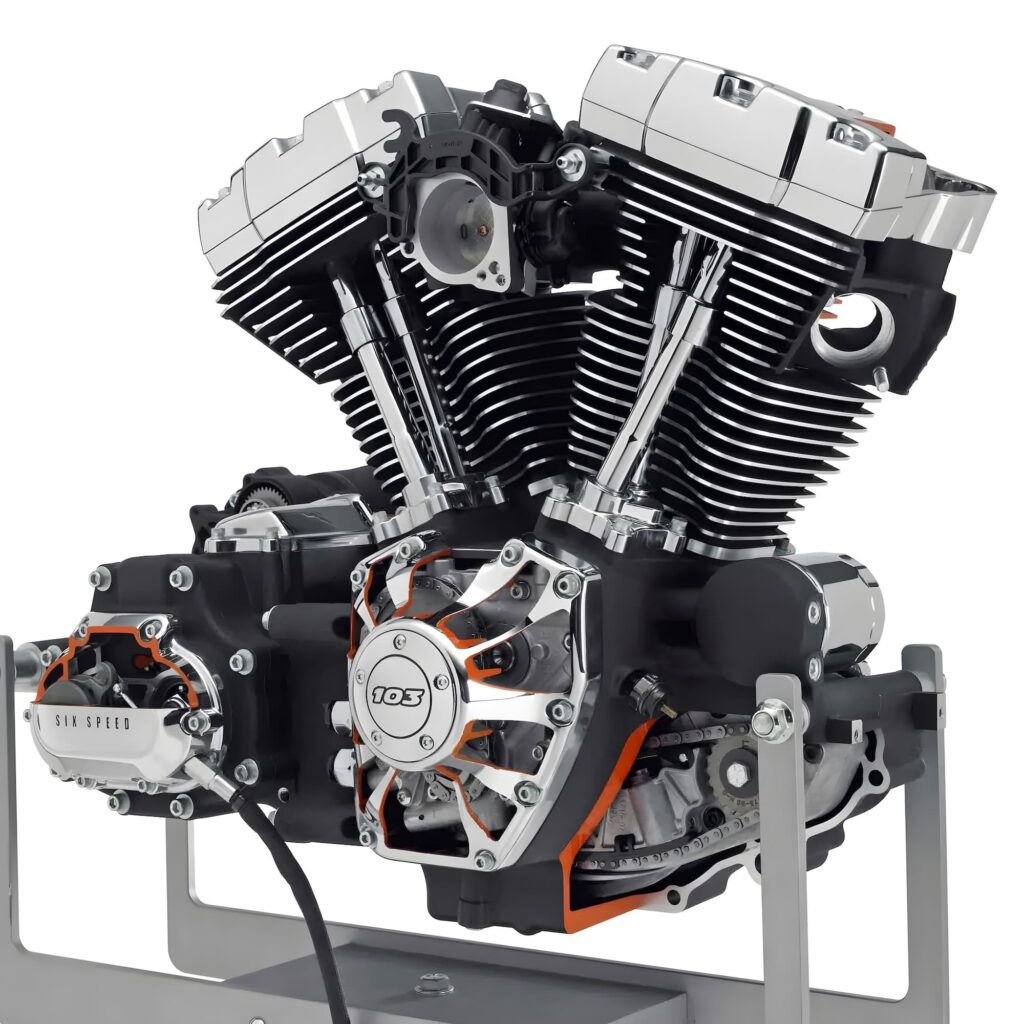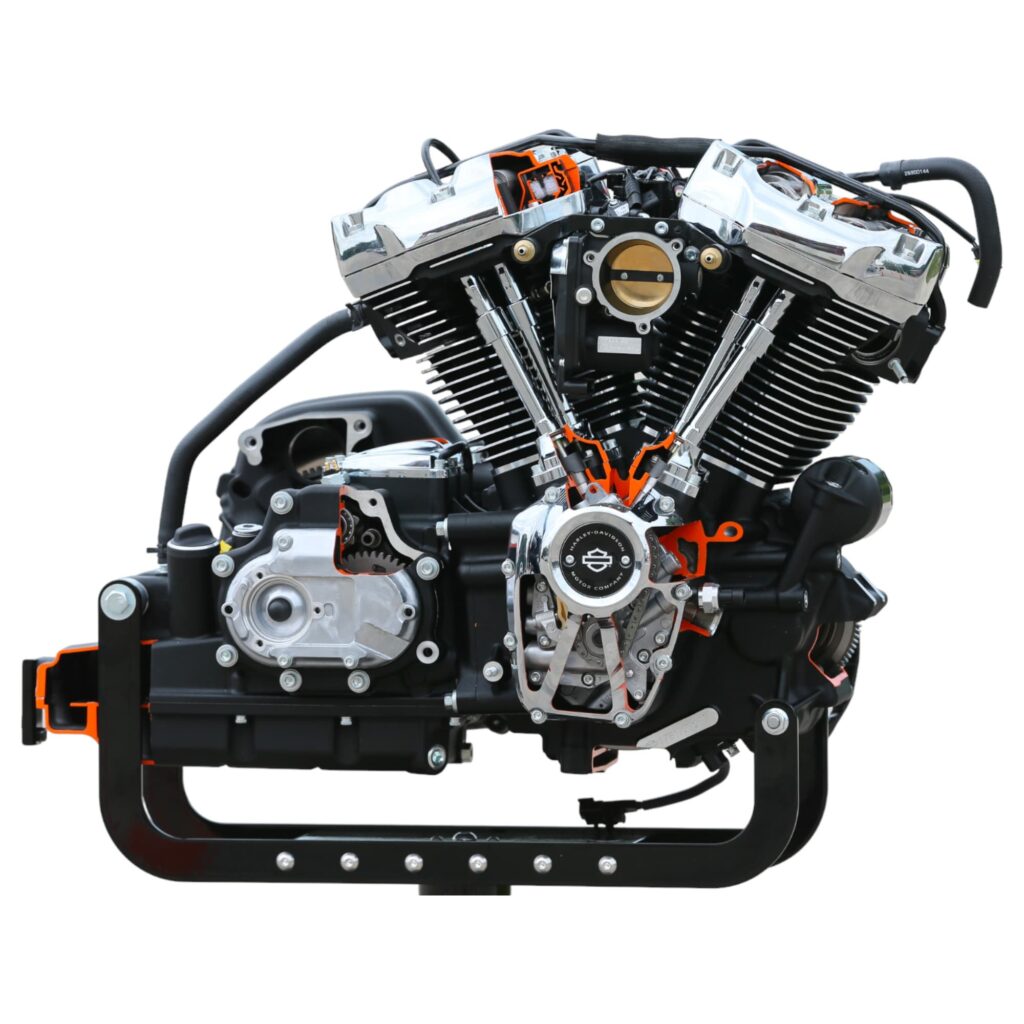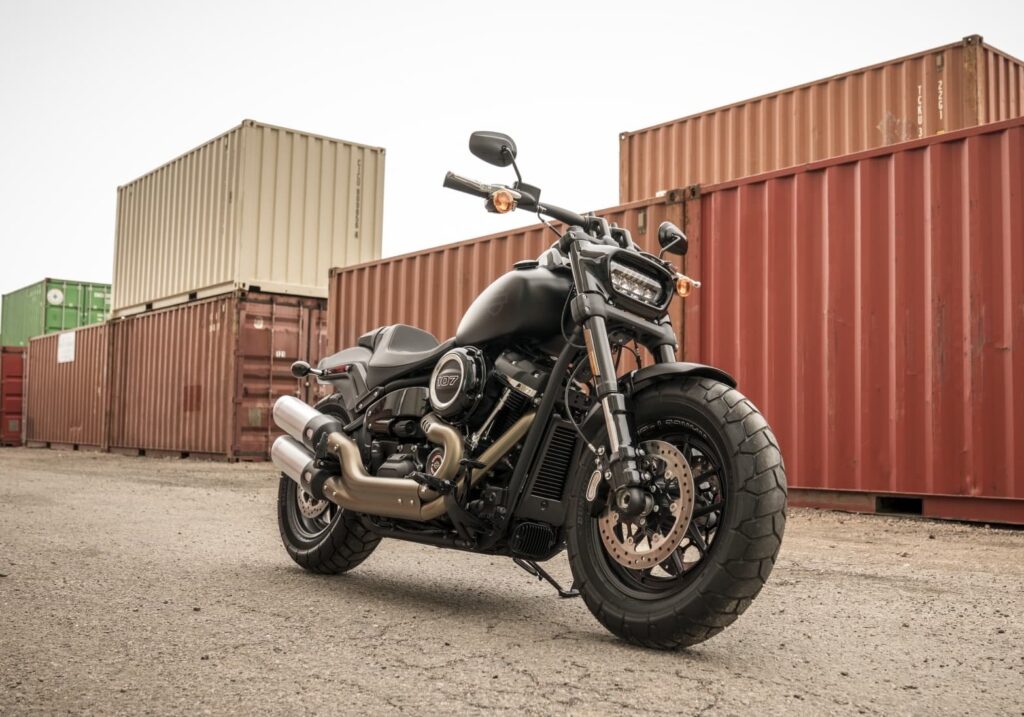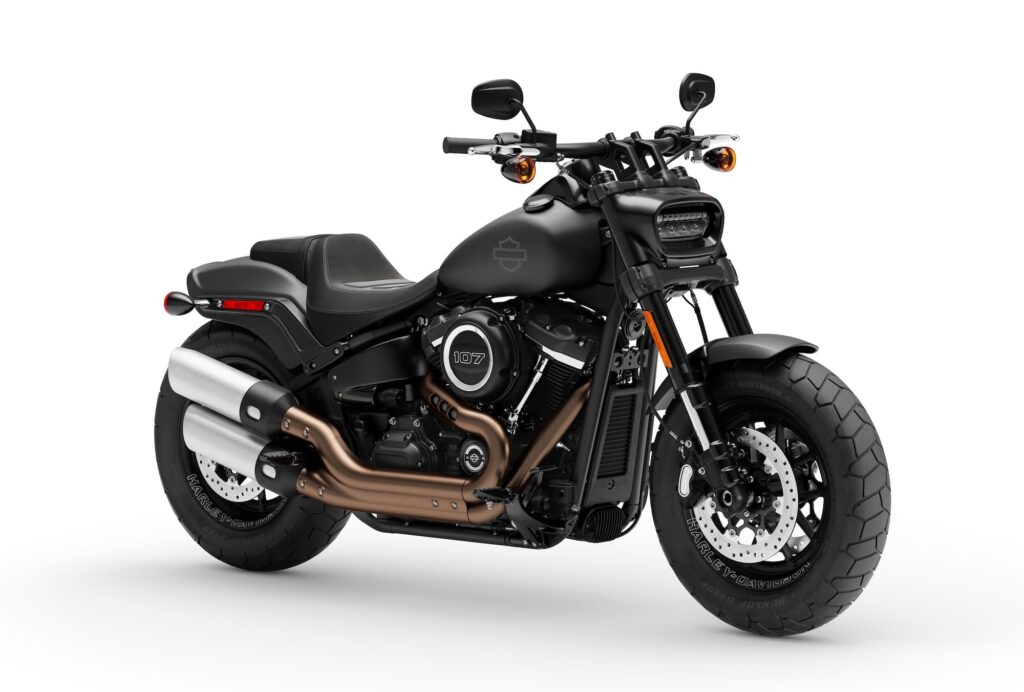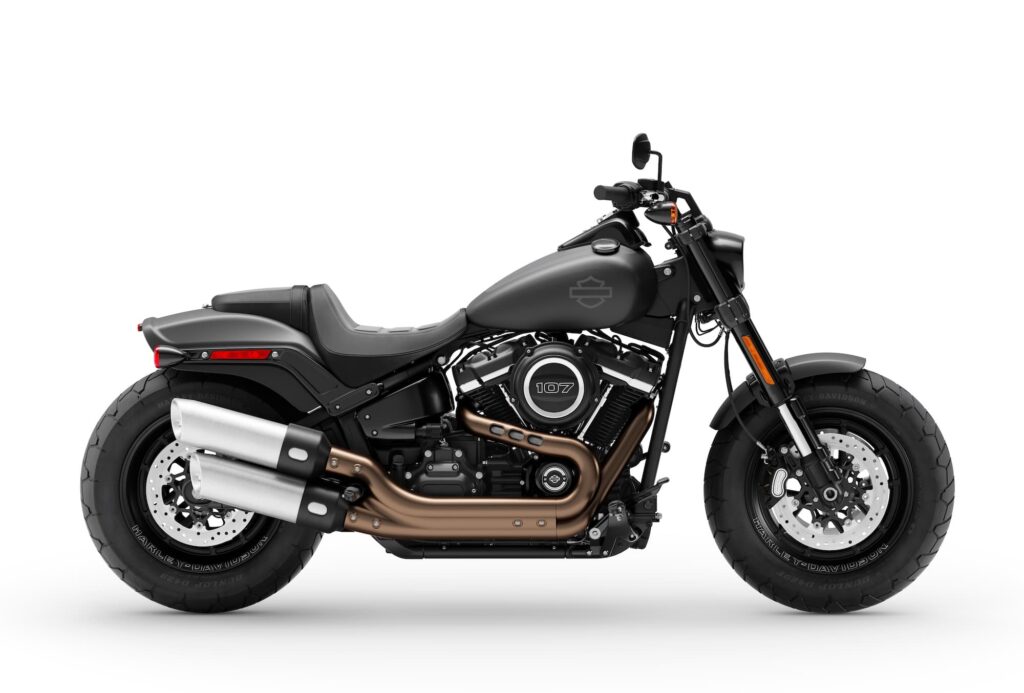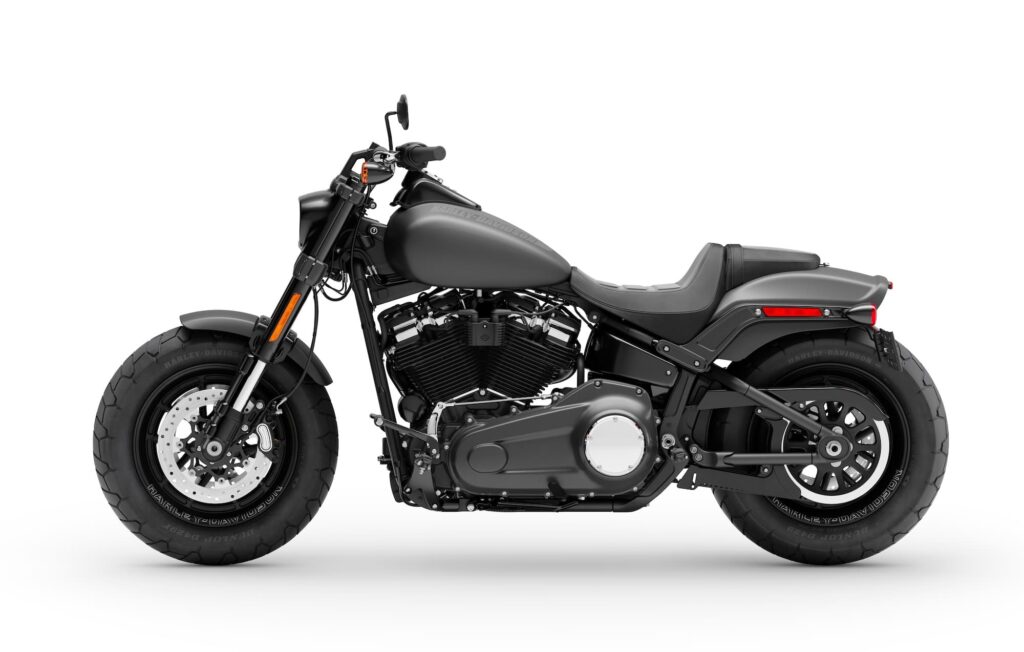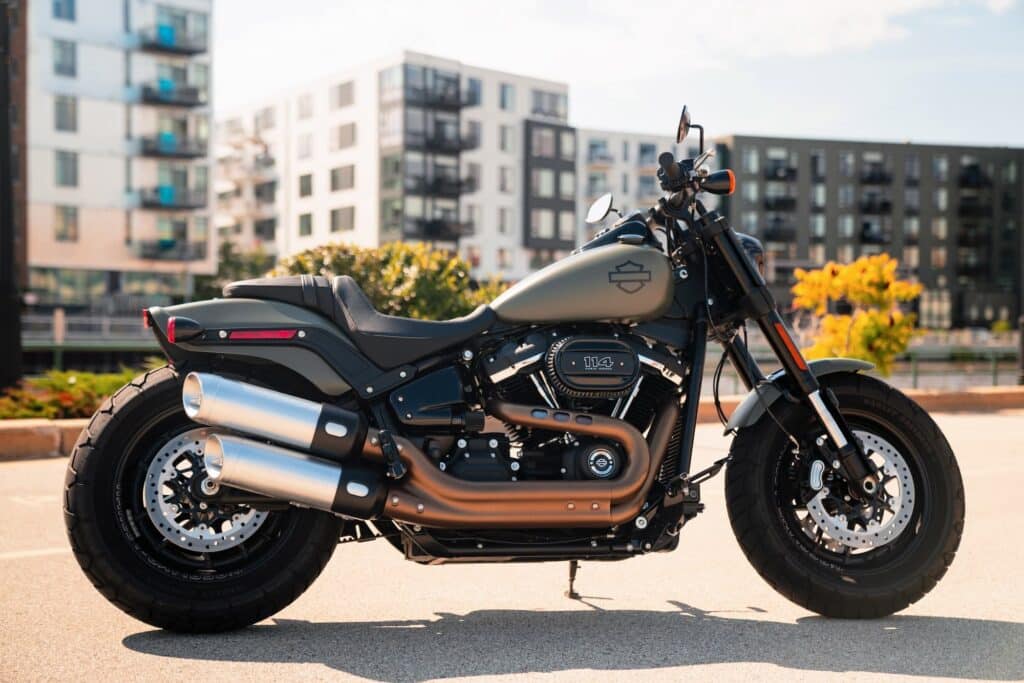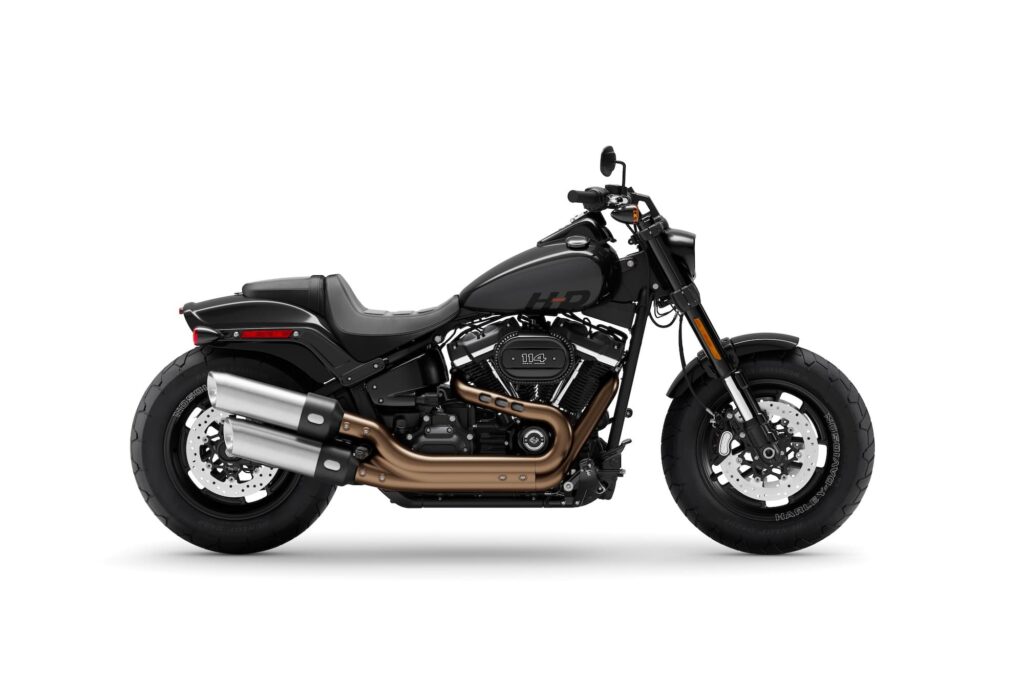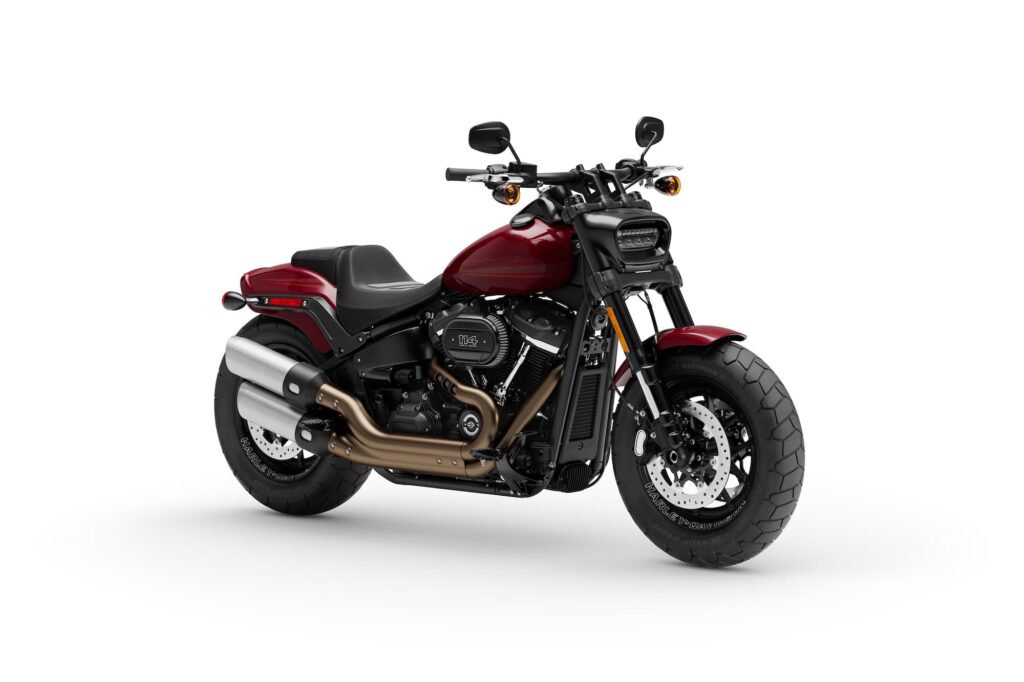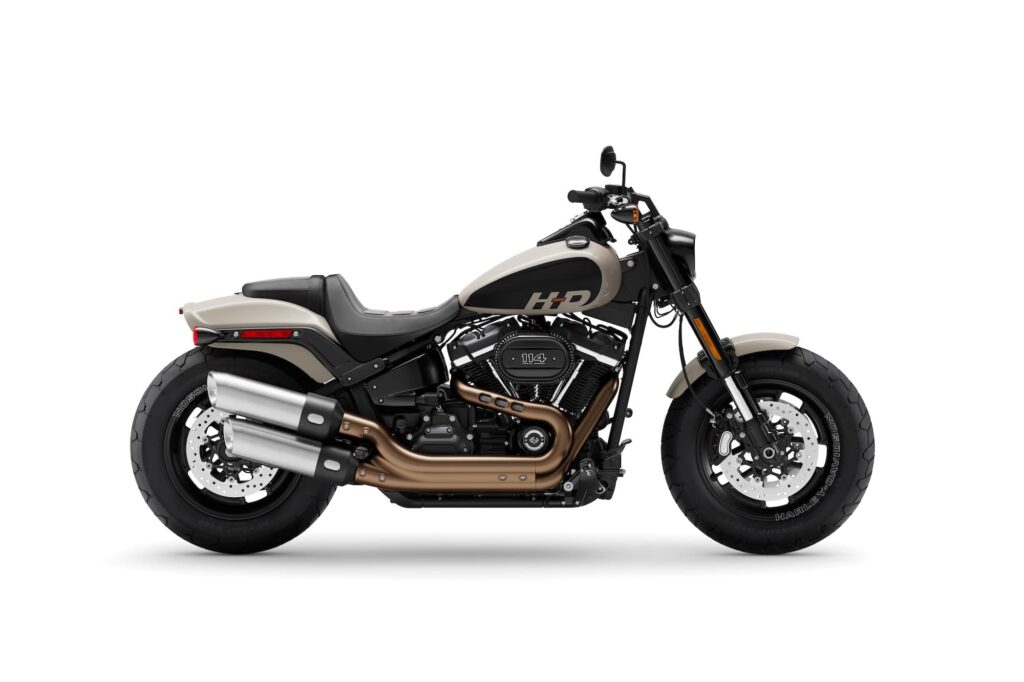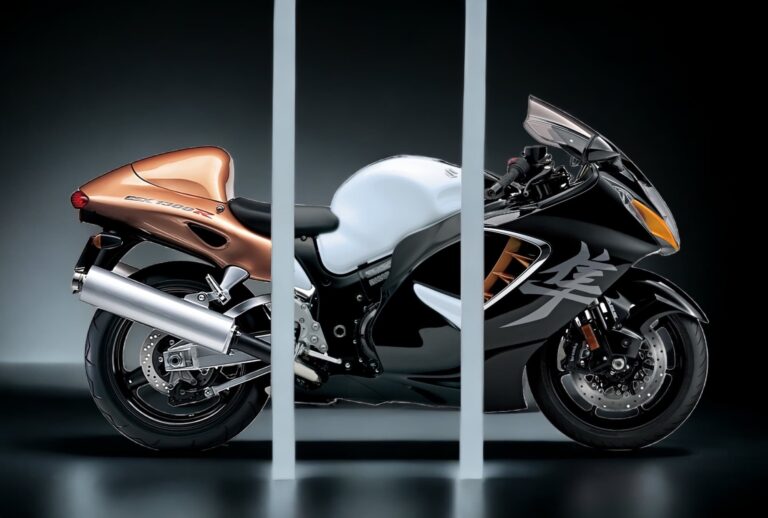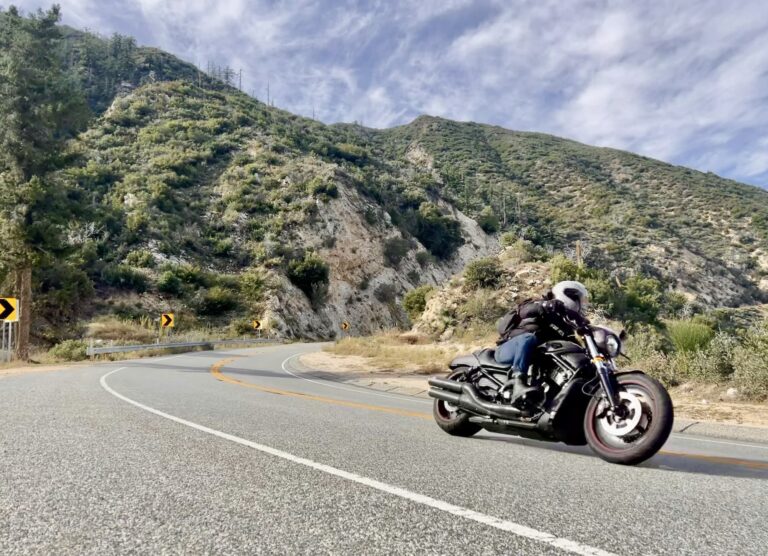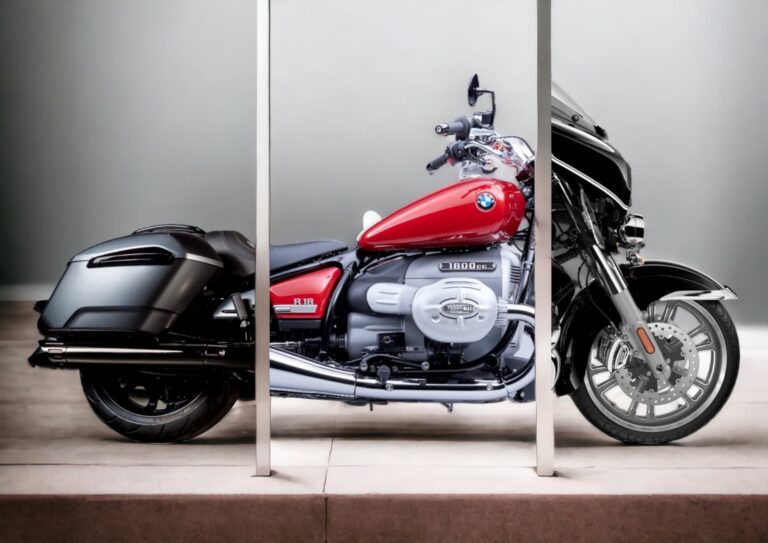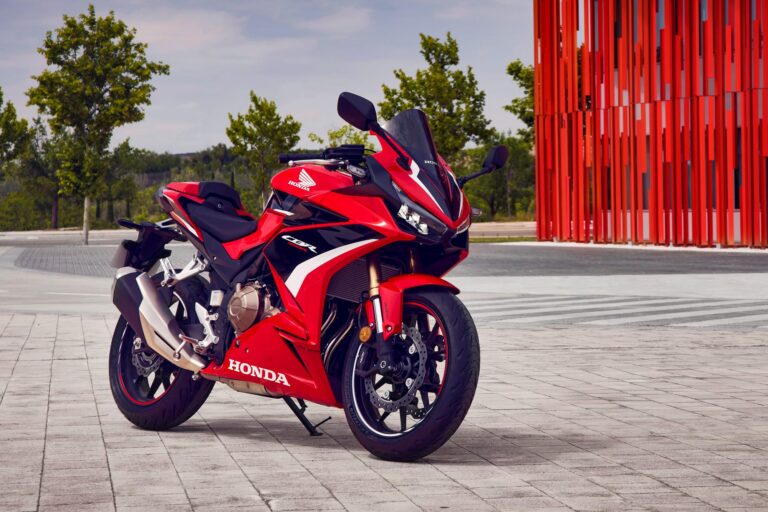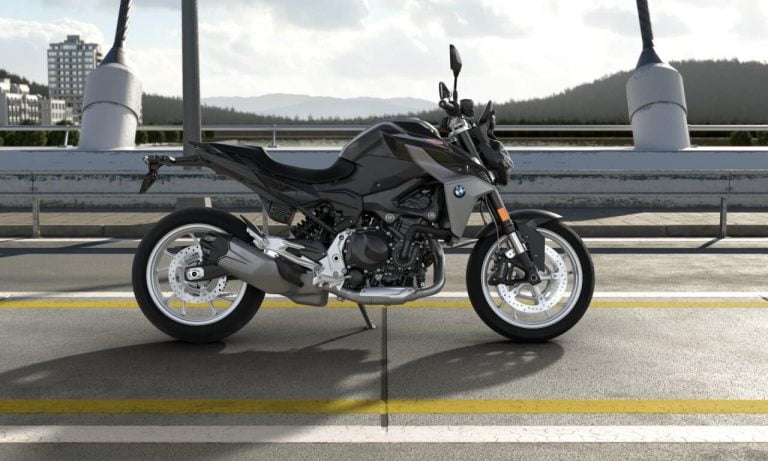If you are interested in Harley-Davidsons (or any cruisers) and have a functioning pair of eyes, you might have noticed the Harley-Davidson Fat Bob at the dealer, staring at you with its muscular lines, daring you to ignore the fact that it has few to no practical bits and isn’t as comfortable as other options in the showroom, and to empty your wallet anyway.
The Fat Bob, despite possibly being named after a portly gentleman (“Obese Robert” being an affectionate nickname for the model), is one of the brawnier-designed motorcycles from Harley-Davidson’s line-up. It’s hard to miss, with its fat front tire, short, pit bull-like build, and aggressive riding position.
“Roberto el Gordo” is not a practical Harley-Davidson, for sure. Riding it is more about enjoying the visceral experience of the motor and chassis. A Fat Bob doesn’t come with a windshield, it has footpegs rather than floorboards, tank size is limited in the Softail models, and luggage mounts are somewhat impractical due to the position of the exhaust pipes on recent models. The impracticality is the main reason people trade them in for other Harley-Davidsons, by the way.
But still, if you’re wondering about le Gros Robert, you’re probably wondering the same things I did, like
- What’s the history behind the “Fat Bob” brand?
- How has it changed over time? What’s the model history, and what’s the difference between generations?
- What are the alternatives to the Fat Bob?
Let’s dive in.
See also — my experience riding the Fat Bob 114.
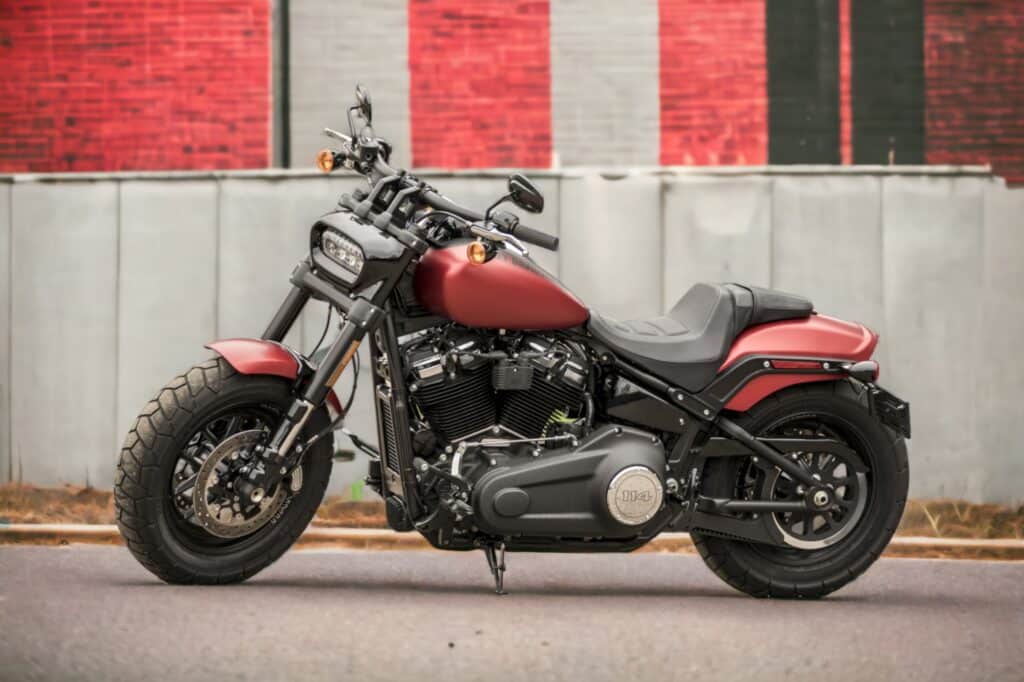
Are you obsessed with motorcycles?
Well, I am. That’s why I created this site — as an outlet. I love learning and sharing what others might find useful. If you like what you read here, and you’re a fraction as obsessed as I am, you might like to know when I’ve published more. (Check the latest for an idea of what you’ll see.)
A Brief History of the Harley-Davidson Fat Bob
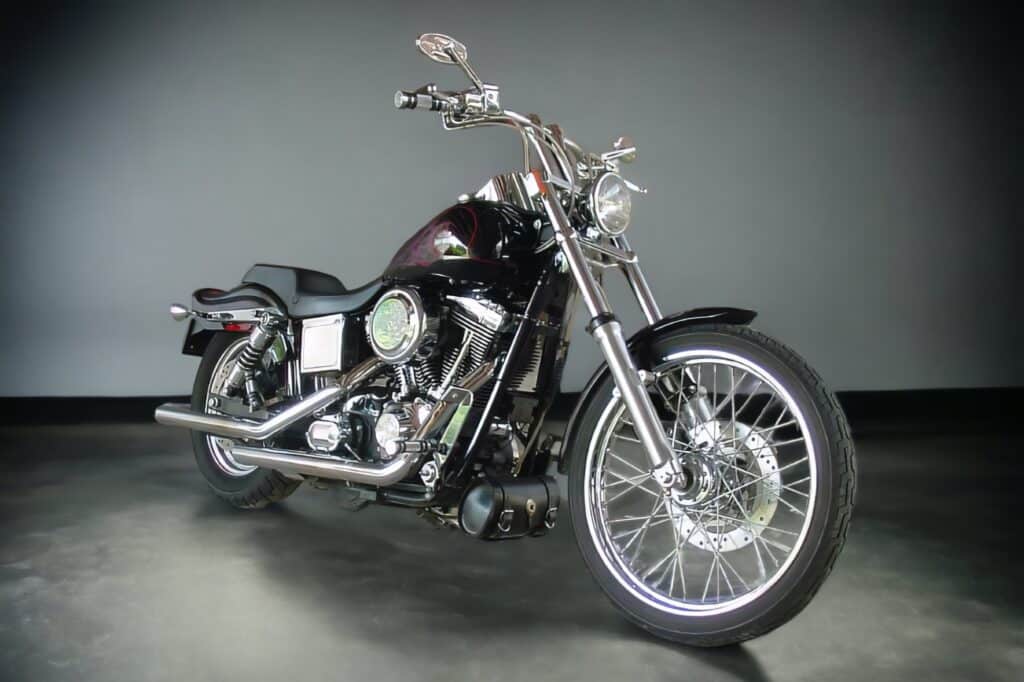
The history of the Fat Bob starts with a bit of pre-history. Harley-Davidson kicked off the Fat Bob name in 1979 with the FXE-F Super Glide Fat Bob.
The original Fat Bob was based on the FX Super Glide, first released in 1971. The 1971-onward FX was Harley-Davidson’s “Factory Experimental”, built from a combination of the FLH Electra Glide and XLH Sportster lines.
Harley-Davidson kept adding variants to the FX line, including the FXS Low Rider from 1977 (the Harley-Davidson Low Rider line being another story of awesomeness), and the Fat Bob in 1979.
The Fat Bob got the “fat” moniker from its dual petrol tanks, and “bob” for bobbed fenders (rather than wrap-around fenders, like on the Heritage Classic).
The original FXE-F Fat Bob came with 74 or 80 ci “Shovelhead”-era engines. The FXE-F 74 is sometimes called the FXE-F 1200 (the equivalent of 74 cubic inches, in cubic centimetres… roughly). It had a four-speed gearbox, which was fine at the time, and generally is a pretty badass ride that makes a lot of noise for everyone to know it’s around.
Harley made the FXE-F Fat Bob for several years. Records seem to indicate they ended its production in 1985. These days, the FXE-F is pretty hard to find, and it’s priced as high as recent models, so you should know what you’re getting into!
Harley took a break with the Fat Bob brand until mid-way into the Dyna / Twin Cam era of Harley-Davidson engines, in the 2000s, which is a realistic place to begin looking for used examples.
One interesting thing to note is that while the original Fat Bob got its name from its tank shape and bobbed fenders, there are a few other items that have become synonymous with the model line.
In particular, most people think of the Fat Bob as having a “fat” front tire. Early Twin Cam models had a 130-profile tire, and more recent ones have a 150-profile tire. But the original FXE-F fit a 100-profile at most, per most users (here on harleytechtalk.com).
Secondly, all modern Fat Bobs have twin disc brakes. This is something Harley normally reserves for their sportier motorcycles, but the Fat Bob models have all had it. And the most recent examples even have an inverted fork, which is about as sporty as “Big Twin” Harley-Davidsons get.
Fat Bob Generations / Model History (Twin Cam Onwards)
Below is a summary of the generations / model history of the Harley-Davidson Fat Bob, from the Twin Cam era onwards. Most specs listed below change, but some that remain the same are mentioned just to highlight that they didn’t change.
Some common features are
- Fuel injection
- Front brakes: Twin 11.8-inch / 300 mm discs, with 4-piston calipers, and stainless steel brake lines
- Six-speed transmission and belt final drive (the TC96 was the first Twin Cam with a six-speed transmission)
- 16-inch front and rear rims / tires (though the front tire profile grew)
| Item | 2008-2011 FXDF | 2009/10 FXDFSE CVO | 2013-2017 FXDF | 2018-2020 FXFB | 2018+ FXFBS |
|---|---|---|---|---|---|
| Engine | Twin Cam 96 | Twin Cam 110 | Twin Cam 103 (2016+: High Output) | Milwaukee-Eight 107 | Milwaukee-Eight 114 |
| Peak torque (US spec) | 125 Nm / 92 lb-ft @ 3000 rpm | 155 Nm / 114 lb-ft @ 3500 rpm | 134 Nm / 99 lb-ft @ 3500 rpm | 145 Nm / 107 lb-ft @ 3500 rpm | 160 Nm / 118 lb-ft @ 3500 rpm |
| Headlights | Twin | Twin | Twin | Bar | Bar |
| Chassis | Dyna | Dyna | Dyna | Softail | Softail |
| Clutch type | Cable | Hydraulic | Cable | Cable, Assist & Conventional | Cable, Assist & Conventional |
| Fuel tank capacity | 5.1 Gal / 19.3 L | 5.0 / 18.9 L | 5.0 Gal / 18.9 L | 3.6 Gal / 13.6 L | 3.6 Gal / 13.6 L |
| Front tire | 130/90 R16 | 130/90 B16 | 130/90 B16 | 150/80-16 | 150/80-16 |
| Rear tire | 180/70 R 16 | 180/70 B 16 | 180/70 B 16 | 180/70-16 | 180/70-16 |
| Front Suspension | 49mm conventional fork | 49mm conventional fork | 49mm conventional fork | 43mm inverted fork | 43mm inverted fork |
| Dry weight | 304 kg / 670 lb | 313 kg / 692 lb | 305 kg / 673 lb | 296 kg / 653 lb | 296 kg / 653 lb |
| In running order | 319 kg / 703 lb | 326 kg / 719 lb | 320 kg / 706 lb | 305 kg / 673 lb | 305 kg / 673 lb |
More detail on each of the generations below, plus some photos of course.
Brief Introduction to the Twin Cam and the Milwaukee-Eight Engines
Any discussion of Harley-Davidson motorcycles inevitably will involve their engines. You can skip this if you’re a Harley head, but not all of us are!
Most discussion of modern “Big Twin” motorcycles (which is most Harley-Davidsons other than the newer liquid-cooled Revolution Max-powered bikes, the Porsche-co-designed V-Rods, and the Sportsters) will involve two primary engines: the Twin Cam, made between 1999 and 2017 model years, and the Milwaukee-Eight, made on touring bikes since 2017 and across the whole Big Twin line-up since 2018.
First, bear in mind that both these engines have a lot in common. They’re both air-cooled V-twins with 45 degrees between the cylinders, and both activate valves via push-rods. Both engines have hydraulic valve lash adjusters, meaning they don’t need their valve clearances adjusted on a predefined schedule.
The Twin Cam or “TC” has two camshafts (surprise!) — one cam per cylinder, each driving two valves. The design was a distinct change from the Evolution engine, which had one camshaft with four lobes. The camshaft in the TC is driven by a silent chain, rather than by gears in the single-cam Evo engine.
The Twin Cam also solved a few architectural problems of the earlier Evo engines, increasing oil circulation through an internal oil pump (the Evo had an external pump connected via gears), and made some targeted changes to reduce all leaks.
There were a few variants of the TC engine along the way, including high-output versions, and also one with a counterbalancer to reduce vibration in situations where it was hard mounted to the chassis.
The Milwaukee-Eight initially replaced the Twin Cam in the Touring line in 2017, and then in all the Big Twin motorcycles (which merged into the Softail line) from 2018.
The Milwaukee-Eight, or “M8”, is so named because it has four valves per cylinder, or eight valves total. It uses pushrods to actuate the valves, but also only has a single camshaft, returning to the design of the Evo engine.
The extra valves mean that the M8 has much better breathing, which helps it make more power — a common ask from Harley owners.
But the Milwaukee-Eight has a few tricks up its sleeve. All M8 motors are counterbalanced, for one thing. The touring models have a single counterbalance shaft, whereas the Softail models (including the Fat Bob) have twin counterbalancers. They’re a lot smoother, but still have some targeted vibrations, to satisfy people who expect that sort of thing.
Harley also targeted reducing heat output in the Milwaukee Eight for rider comfort, and even improve fuel economy, despite the power gains.
So, which is “better”? The TC is no longer in production, which makes it a classic in some senses, while the M8 motor still keeps getting better and better. You can argue in favour of either. The Twin Cam vibrates more, which might be an aesthetic you prefer, but the Milwaukee-Eight isn’t short on character, either, and recent M8s make more power than even the Screamin’ Eagle/CVO Twin Cam motors.
The question becomes more complicated because Harley-Davidson made other changes at the same time as introducing the M8, like abandoning the Dyna chassis.
In terms of reliability, both the TC and the M8 motors are modern, well-designed engines, whose reliability will depend more on maintenance and regular oil changes rather than their individual designs.
The predictable answer is that you should try both and see what you like more, but neither engine is better or worse than the other, other than in peak power output.
2008-2011 FXDF Dyna Fat Bob (Twin Cam 96)
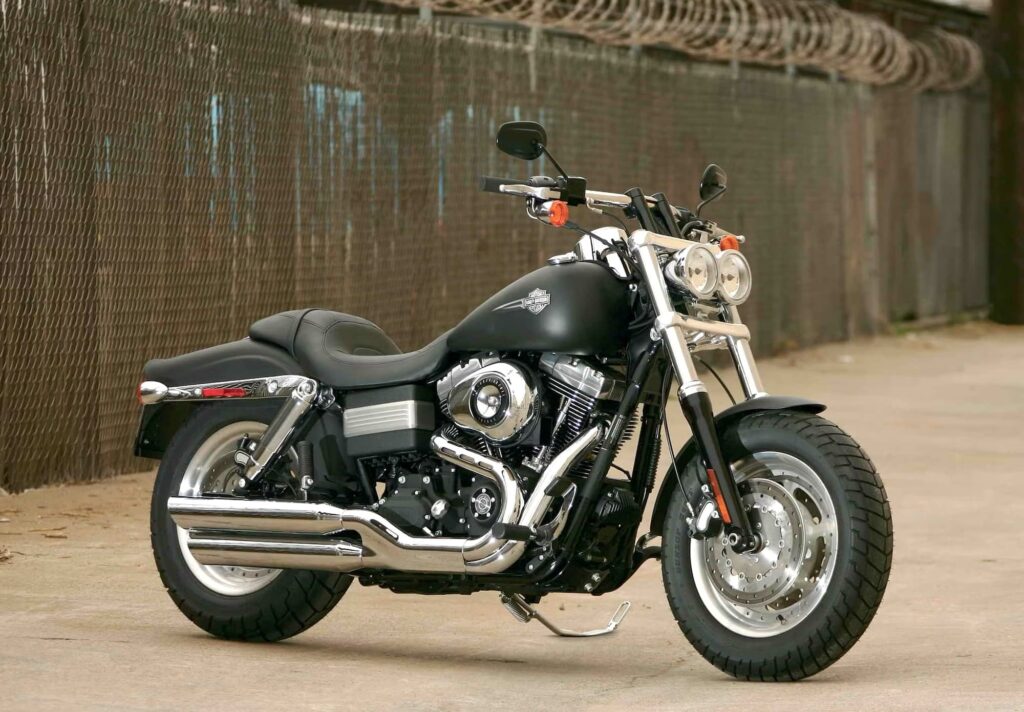
After a hiatus, Harley brought the Fat Bob back into the Dyna chassis with the Twin Cam 96 motor.
You can immediately see the family characteristics of the 2008 FXDF Fat Bob — bobbed fenders and the wide tank. But Harley-Davidson also introduced the other hallmark features of the fat front tire, twin disc brakes, and the horizontal lighting arrangement.
The twin lights were pretty unique for Harley-Davidson, though other brands had used them prior, notably Triumph on the Speed Triple.
Another interesting styling choice is the chunky tires, which almost look like the kind of tires adventure bikes come with from the factory. Obviously, that’s not their intention…
A few other design flourishes for the Fat Bob are the staggered exhaust pipes, the Dyna’s twin shocks being encapsulated in a chrome jacket, and drag bars up top (with internal wiring to reduce clutter).
On its release, the Fat Bob became one of the most popular of the Twin Cam line. It’s one of the most stripped-back Harleys, but plenty of people put on a couple of bags and a shield and used it for touring. The forward controls are comfortable, but not so far forward that they’re like highway pegs — just far enough to give you that bad-ass feel.
“Bad-ass” is the design cue that Harley-Davidson seems to have used for the Fat Bob. It has an aggressive stance when static that’s still very visible when it’s being ridden.
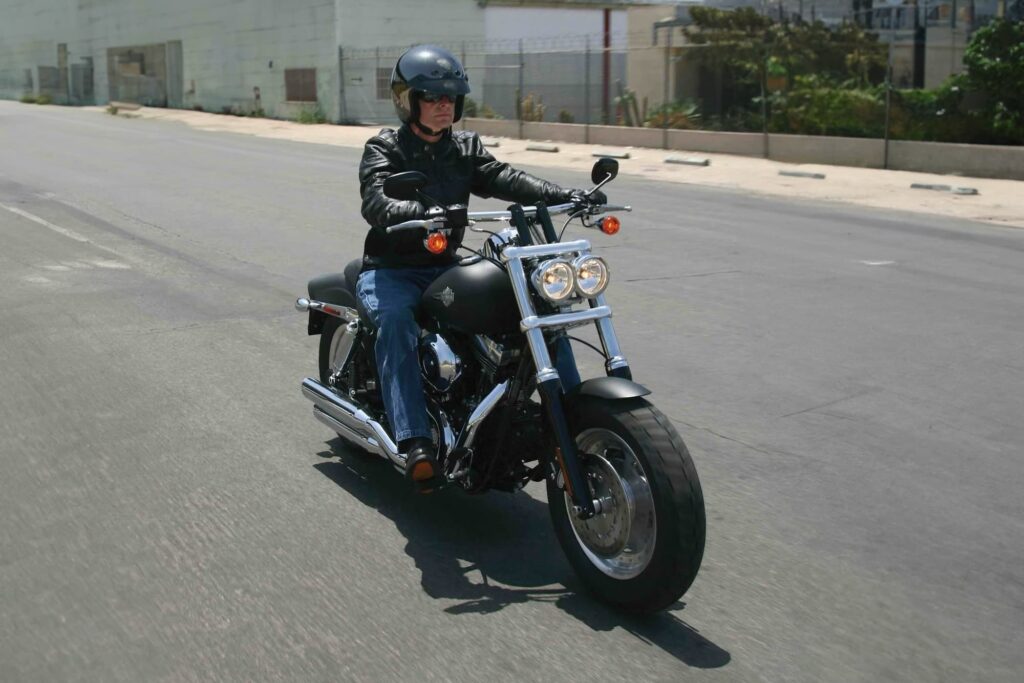
Because your feet are kicked out forwards and the bars are relatively forward, the Fat Bob is better suited for people with longer limbs. If you’re of shorter stature, there are options like mid-controls and more swept-back bars.
The 2008 Fat Bob set the template not just for the Dyna models, but also for the Softail models to come a decade later.
2009-2010 FXDFSE / FXDFSE2 CVO Dyna Fat Bob (Twin Cam 110)
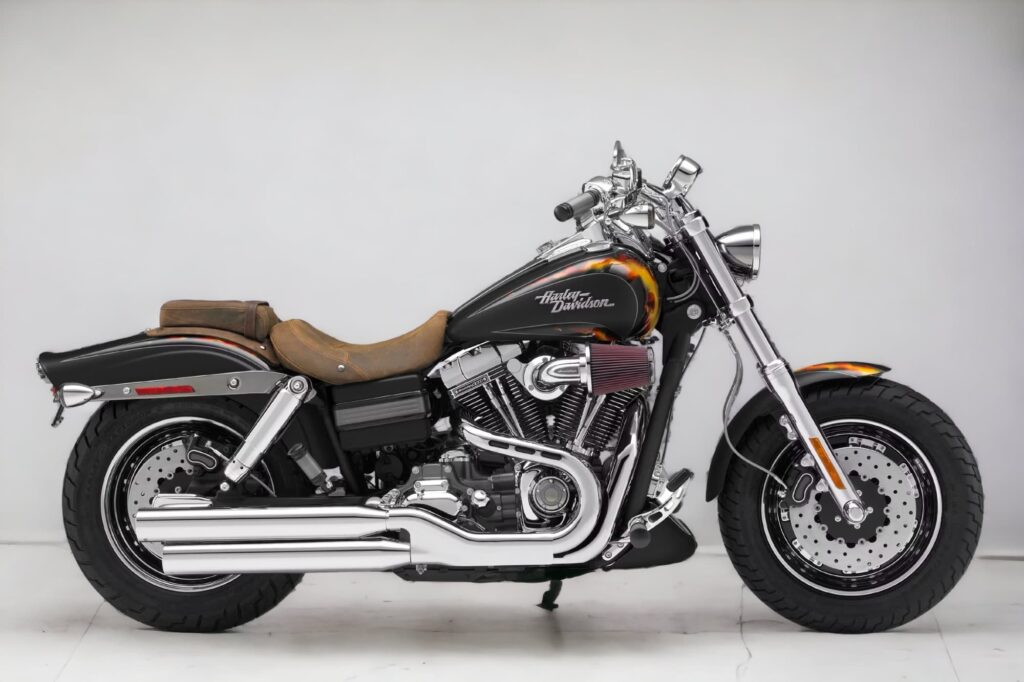
In 2009 and 2010, Harley-Davidson released the CVO Fat Bob, with the 110 Twin Cam motor, plus a few other performance modifications off the shelf.
The motor in any CVO bike is the feature element, of course. The 110 Twin Cam engine makes 114 lb-ft at 3500 rpm, making it second only to the modern Milwaukee-Eight 114 in peak torque output.
Aside from the motor, Harley-Davidson made a few other performance mods:
- A hydraulic clutch, replacing the cable clutch on the base model, accompanies a stiffer clutch spring. Later models would revert to a cable clutch.
- A “Heavy Breather” air cleaner sticking out the right-hand side
But really, Harley-Davidson went to town with paint and chrome on the CVO Fat Bob. It came in some stylish and even somewhat garish colours, much more “out there” than your average CVO. But how can you say no to a yellow motorcycle?
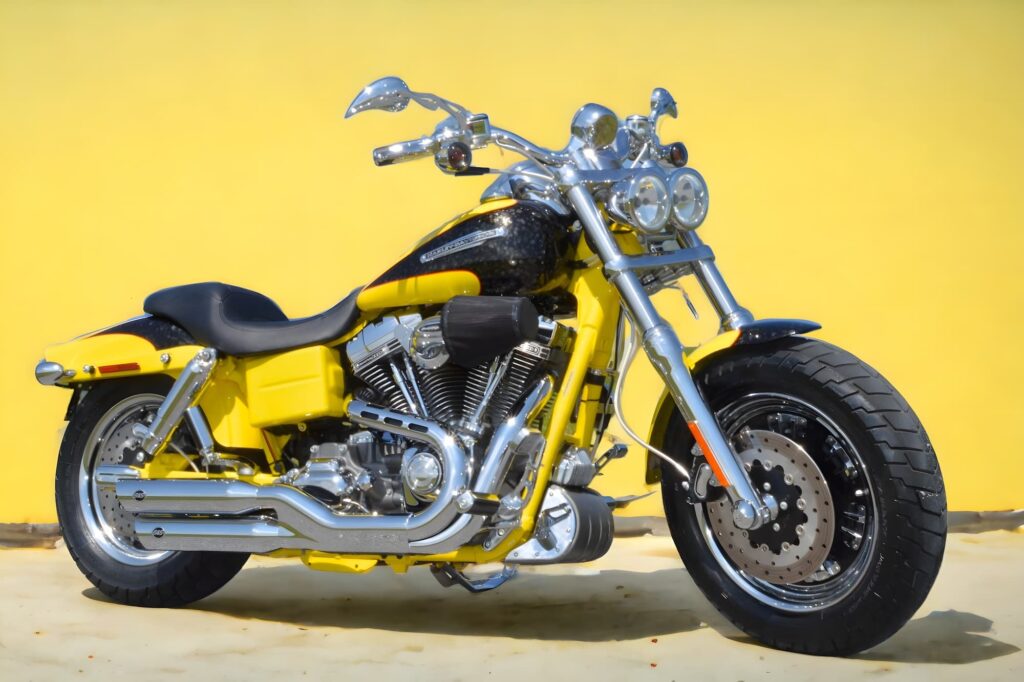
2012-2017 FXDF Dyna Fat Bob (Twin Cam 103)
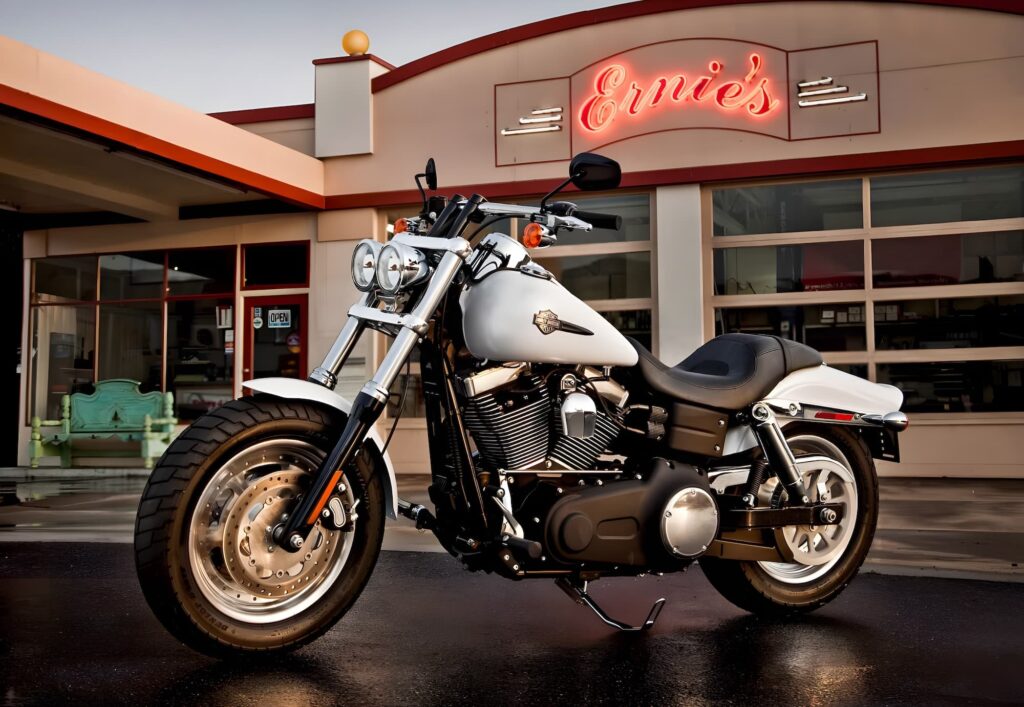
From 2012, Harley-Davidson upgraded the base model Twin Cam Fat Bob’s motor to the 103 “High Output” Twin Cam, replacing the 96 of the earlier (non-CVO) model.
The Twin Cam 103 brought more power to the Dyna range, without quite getting up there like the CVO model, let alone the later Milwaukee-Eight engines.
For 2012, Harley-Davidson included optional ABS, which comes with Harley’s Smart Security system.
Aside from that, Harley-Davidson didn’t really change much from the earlier Dyna Fat Bob. It’s still the stocky pit bull of the Big Twin lineup, with bobbed fenders, big tires, and fat fork tubes.
In 2016, Harley changed the designation of the Fat Bob’s engine from the Twin Cam 103 to the “High-Output” Twin Cam 103. The quoted peak torque is the same. But the HO cams have the same lift, but more overlap (per this thread), which helps with more low-end torque.
One important thing to bear in mind is what you lose when you go to the next-gen Milwaukee-Eight Fat Bob. You lose
- The iconic Dyna twin shock style. There are benefits to the single shock, but for many, the Dyna chassis is the best.
- The Twin Cam motor. The Twin Cam has just more animal character and vibes than the much more refined Milwaukee Eight. The TC motor is also thought of as being “ironed out” by the 103 generation.
- The style. Many don’t like the style of the updated LED lights.
The good news is that Harley-Davidson didn’t really change much in the Fat Bob over the course of its TC103 years, but they tweaked the look, blacking out more bits over time. So it’s up to you which year to get.
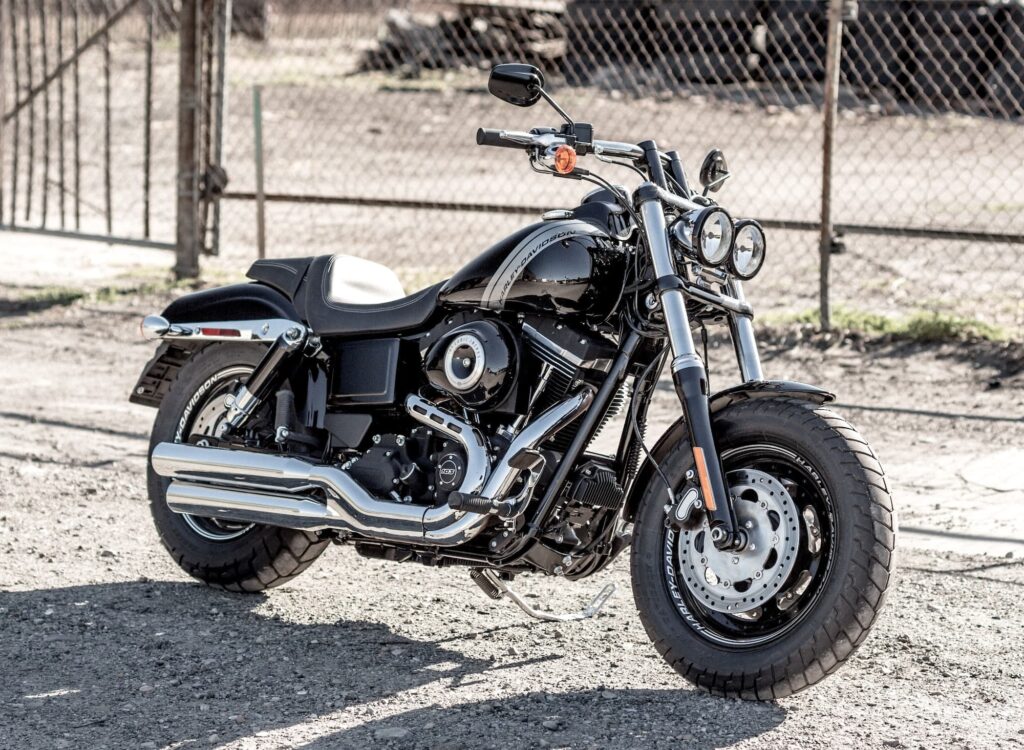
2018-2020 FXFB Softail Fat Bob (Milwaukee-Eight 107)
Harley-Davidson made a TON of updates for the 2018 FXFB Fat Bob. It’s a completely new motorcycle. Where to start?
The first thing to mention, which is the love-it or leave-it acid test, is the looks. Harley-Davidson doesn’t just have decades of history in the brand name; some of the models have stayed consistent for just as long. So “new” designs are polarising, and attract as many detractors as they do supporters.
The main elements of the 2018 Fat Bob design are that front LED headlight, and the sweeping up exhausts.
Let’s just leave it at this: I like it (especially the exhausts), and you may like it or hate it, and that’s fine. There are other models, and lots of customisation to be done. For context, I’m not that old (mid-forties at time of writing), and haven’t been around Harleys for many decades like some old hands, which means I have less emotional attachment to the old stuff. But if you do, I totally get it.
Let’s move on to the chassis. The FXFB, like the rest of the retired Dyna line-up, is now based on the new Softail chassis.
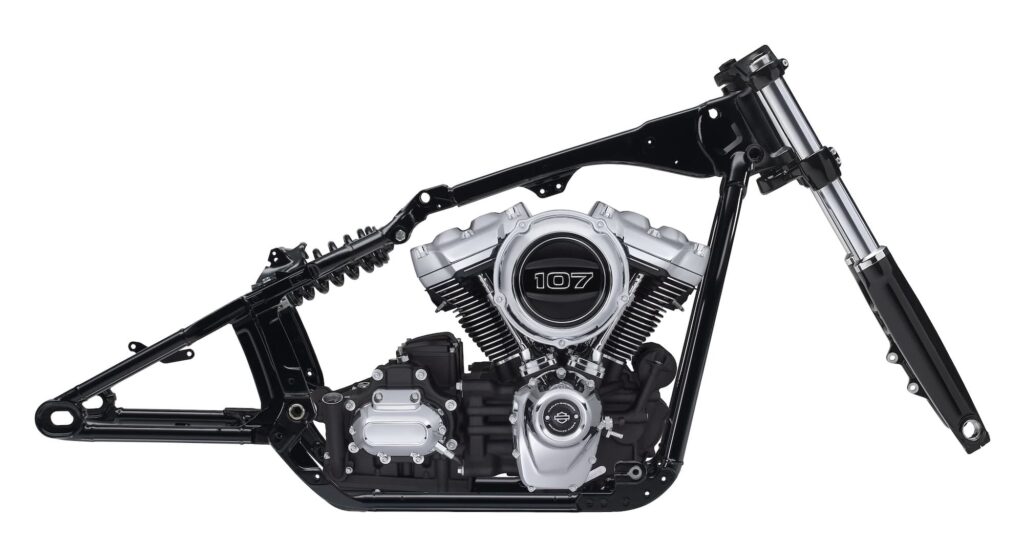
The Softail has always been designed around a hidden rear suspension system to mimic the appearance of a hardtail, but with the comfort of a monoshock in the rear.
Since the first Softail model, Harley-Davidson has revised the Softail chassis a number of times, including in 2000 with the FXSTD Softail Deuce, then in 2008 to accommodate the Twin Cam 96B engine.
The 2018 revision to the Softail was a total overhaul. Harley-Davidson completely revised it to be lighter and stiffer, and to accommodate the Milwaukee-Eight engine, and dual-bending valve front suspension, like on the 2017 Touring line.
The new Softail chassis is significantly stiffer than the previous Softail chassis, as well as stiffer than the Dyna chassis, while also being lighter in weight.
But alas, in terms of style, not everyone liked the change. You lose the twin shock look of the Dyna, as they’re replaced by a hidden monoshock. However, you also gain a lot of chassis stability, and also you lose one more element that can lead to Dyna “death wobble” (which some never experience; but those who have never want to experience it again!).
The third difference, and I can’t believe it took me this long to get here, is the Milwaukee-Eight engine.
It’s still a Big Twin — still an air-cooled high-capacity 45-degree V-twin with pushrod-driven valves and hydraulic valve lash adjusters. (See the section above on the engines). But the M8 is much smoother (with built-in twin counterbalances in the Softail), more economical (lower quoted fuel consumption), and more powerful. Whether that’s your thing is up to you!
Regardless of aesthetic feeling, the Milwaukee-Eight engine is a high-torque and pleasing engine that already has leagues of fans.
One weird downgrade in the FXFB / FXFBS Fat Bob is that Harley-Davidson decided to reduce the fuel tank size by almost 30%. Looking at the ratio the other way around, the previous gen has 50% more tank volume! This change reduces the range, and makes trips on the Fat Bob annoying, if you were thinking about it.
The frustrating thing is that other motorcycles in the Softail lineup have a 5L tank, like the Low Rider S for example.
2018+ FXFBS Softail Fat Bob (Milwaukee-Eight 114)
It gets even better with the FXFBS Fat Bob, which has the more powerful Milwaukee-Eight 114 engine.
It’s not the most powerful M8 — that being the 117 which graces some of Harley-Davidson’s models — but it’s noticeably more powerful, especially so if you choose to upgrade your ride.
The FXFBS Fat Bob 114 is marginally more expensive, and makes a bit more power. In some markets, the FXFBS came with default ABS and the FXFB had it as an option. And now, in some markets, the FXFB has been discontinued, and the FXFBS is the only one available!
Alternatives to the Fat Bob
If you’re looking at the Harley-Davidson Fat Bob, then it makes sense that you’d also be looking at other sporty cruisers from within the Harley-Davidson family, plus maybe something from Indian. Unfortunately, there’s not much else out there, right now.
The first alternative that comes to mind is the Harley-Davidson Low Rider S.
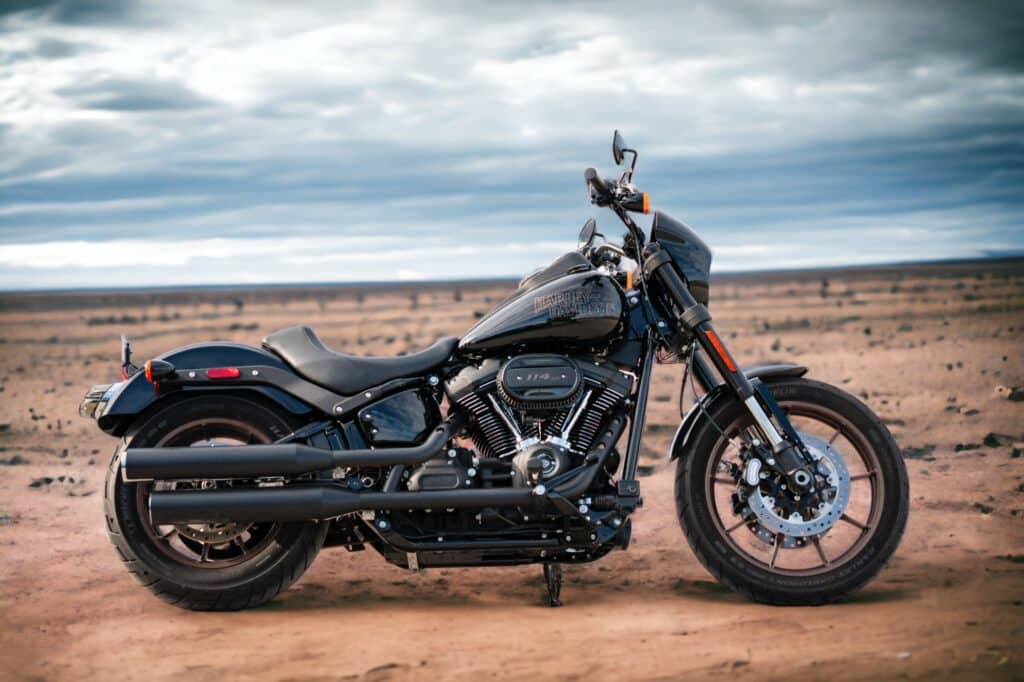
The Low Rider S has a different kind of cruiser aesthetic, what Harley-Davidson calls “West Coast” style, with mid-mount controls and taller bars. But it shares twin front disc brakes and an inverted fork. There’s also a version with a small fairing, the Low Rider ST.
Like the Fat Bob, the Low Rider S has heritage back to the 1970s. But the model had more continuous production through the 80s and nineties.
Probably the most distinguishing characteristic of the Low Rider S is the riding position, which is very neutral, with mid controls. Some taller riders don’t like it, but I love it (at 6’0 with a 32-inch inseam), and find it “just right”. There are other, taller riders who agree, too.
Another thing in the Low Rider S’ favour is the larger 5 US Ga tank (vs 3.6 on the Fat Bob). You can get the tank onto the Fat Bob, but it’s not a cheap swap.
Finally, the Low Rider S received the 117 engine in 2022, which the Fat Bob hasn’t (at time of writing — I will update this if things change).
The Fat Bob used to have an advantage of a slightly taller shock in its chassis, but Harley-Davidson levelled the playing field with the most recent LRS.
Also from within the Harley family is the 2021+ Sportster S.
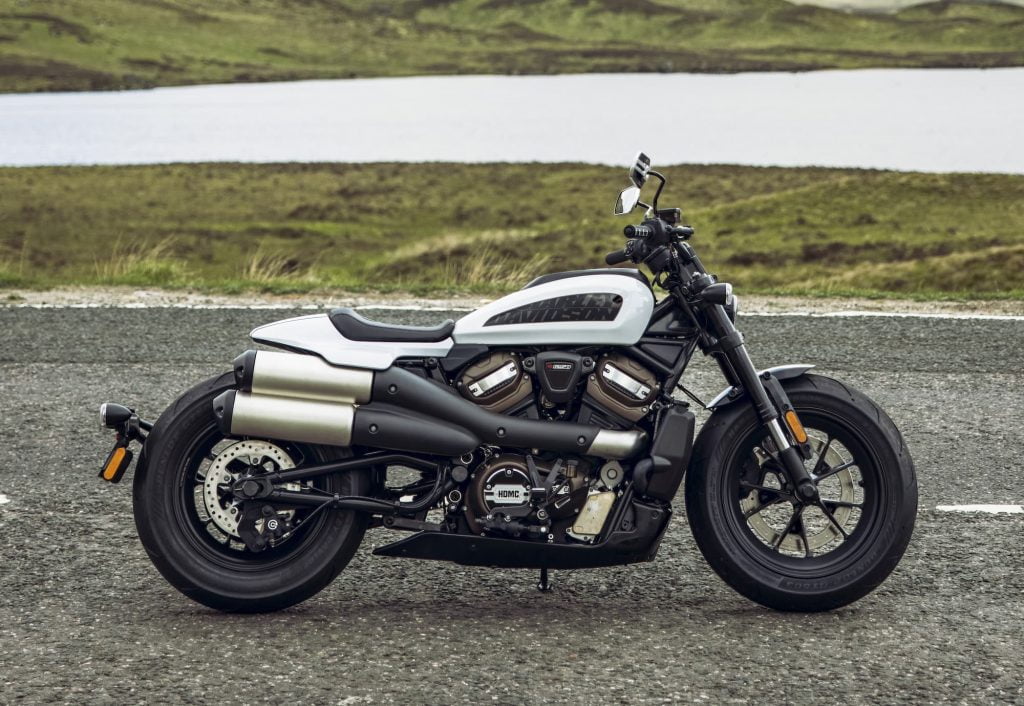
The Sportster S is one of Harley-Davidson’s new RH line, and is totally different from the previous air-cooled Evo-powered Sportster. It’s based on the Revolution Max liquid-cooled dual overhead camshaft engine, but still has hydraulic valve lifters for low service requirements.
The Sportster S is a high-spec, decently powered (around 81 kW / 110 hp), and low weight (for a Harley; competitive weight would be a better description) motorcycle that’s a lot sportier than the Evo Sportsters it edged out. It’s not perfect, but it’s a great bike with a sparkling engine, and it’s a blast to ride.
Even though it’s called a Sportster, its brawny look is quite reminiscent of the Fat Bob, as is the riding position.
If you’re looking for a quicker ride than the Fat Bob (or indeed anything in Harley-Davidson’s air-cooled range), and are willing to trade a bit of heritage for the pleasure, then the Sportster S might be your ticket.
Finally, from Indian, there’s the 2022+ Indian Sport Chief.
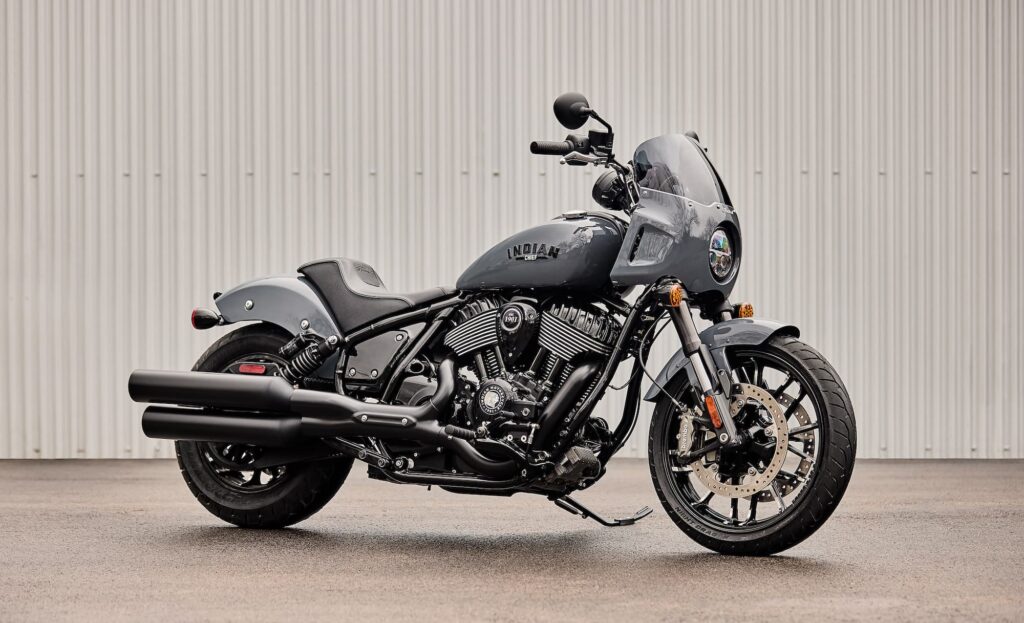
The Indian Sport Chief is a very good-looking bike. Those huge cylinder heads, that double downtube frame, that long wheelbase… it all just works. The Sport Chief is a closer alternative to the Low Rider ST, but it’s the closest alternative to the Fat Bob that I can pull out of the Indian lineup.
Conceptually, the Indian Sport Chief is very similar to the Harley-Davidson, with a similar capacity engine and making similar torque. It comes with the Thunderstroke 116 ci motor, an air-cooled twin with two valves per cylinder (vs. the four of the Milwaukee Eight).
The Sport Chief has mid-mount controls, a fairing, twin rear shocks (Dyna-style, a fact not lost on the American cruiser public) and maybe most importantly, is a big twin from an American company that has heritage in the brand, but not the same continuous history of production that Harley-Davidson has had.
You can get a Harley and enjoy the community and support, or be a little iconoclastic and get an Indian. You’ll lack dealer support, but gain uniqueness. Unfortunately, you won’t save much money — these bikes are all in “luxury item” territory.
Wrap Up — What’s Next for the Harley-Davidson Fat Bob?
The obvious next step for the Fat Bob is for MoCo to do what it did a year after releasing the first one — come out with a CVO version. A bigger capacity engine, performance intake and exhaust and a tune, and some flashy paint… I can’t see how that would fail!

